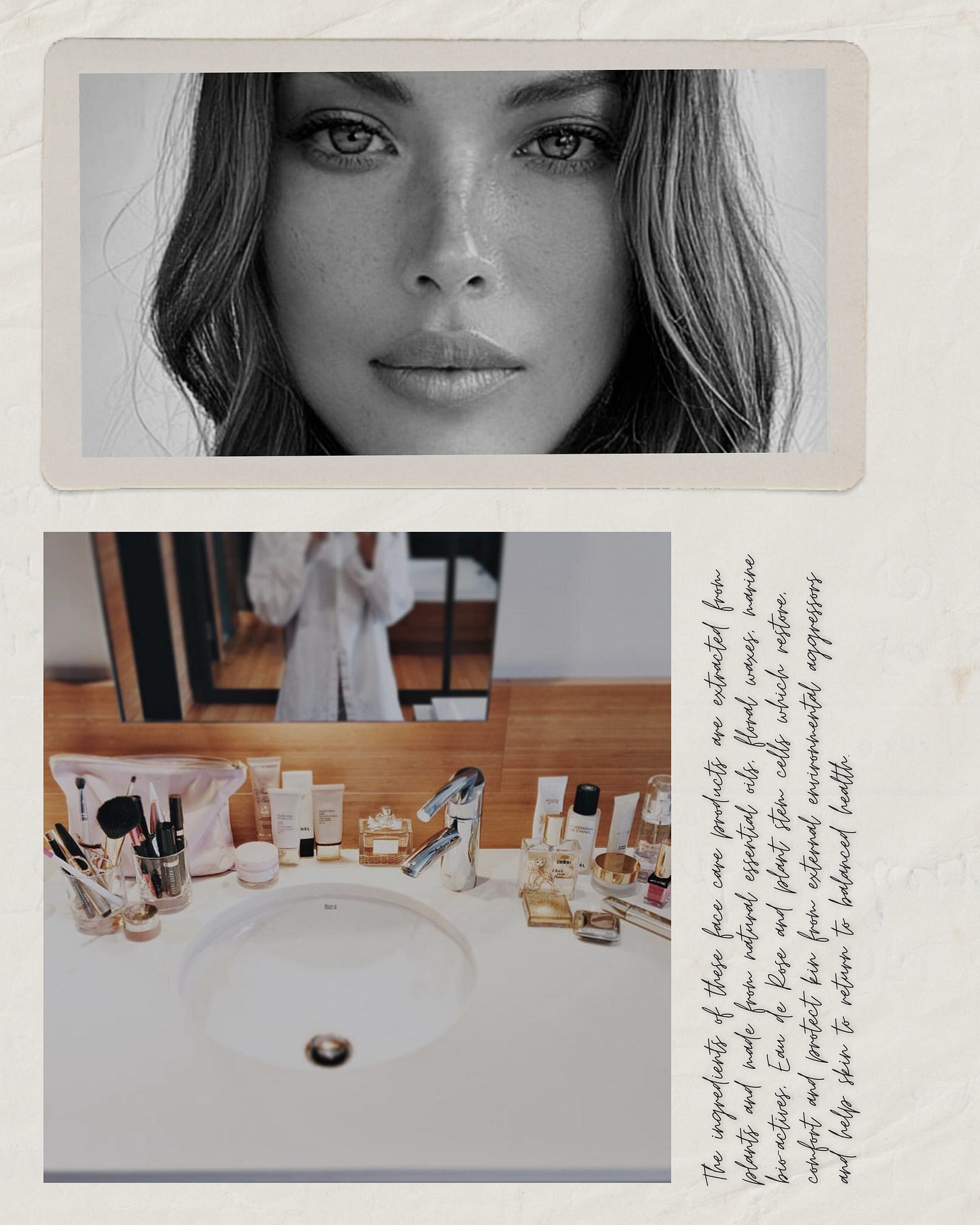The Skin We're In: On Beauty, Time, and Truth
How Beauty Became a Performance, and Ageing a Problem to Solve
Toward the end of F. Scott Fitzgerald’s 1922 novel, The Beautiful and the Damned, a poignant line captures a central theme:
"Each night when she prepared for bed she smeared her face with some new unguent1 which she hoped illogically would give back the glow and freshness to her vanishing beauty."
This line describes Gloria, one of the main characters, and her desperate attempts to recapture her fading youth, reflecting the novel's themes of vanity, the relentless passage of time, and the futility of resisting ageing. Throughout the novel, Fitzgerald returns to this motif, later referring to Gloria's "tragic unguents."
In striking contrast, today, the beauty industry heavily promotes the idea that youth and beauty can (and should) be preserved or restored through the use of products and treatments. Advertisements and marketing campaigns suggest that with the right regimen, creams, and serums, one can maintain a youthful appearance indefinitely. This contemporary narrative stands in opposition to Fitzgerald's portrayal of the inevitable decline of beauty, highlighting a cultural shift towards a more optimistic (yet unrealistic) view of ageing and beauty maintenance.



